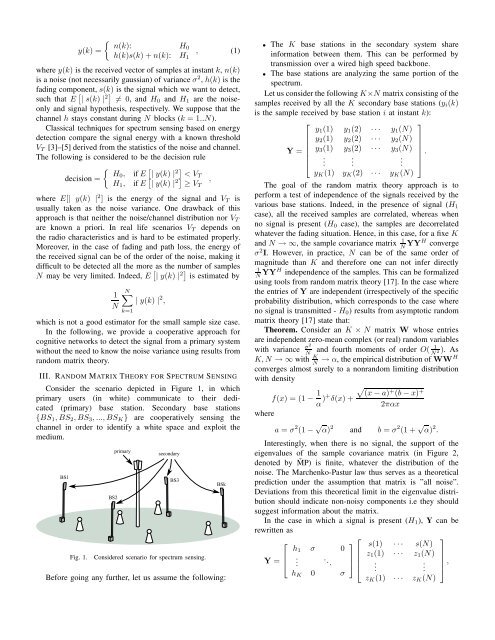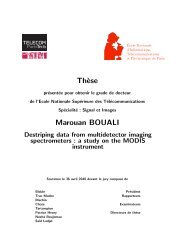Cooperative Spectrum Sensing Using Random Matrix Theory - HAL
Cooperative Spectrum Sensing Using Random Matrix Theory - HAL
Cooperative Spectrum Sensing Using Random Matrix Theory - HAL
You also want an ePaper? Increase the reach of your titles
YUMPU automatically turns print PDFs into web optimized ePapers that Google loves.
{<br />
n(k): H0<br />
y(k) =<br />
, (1)<br />
h(k)s(k)+n(k): H 1<br />
where y(k) is the received vector of samples at instant k, n(k)<br />
is a noise (not necessarily gaussian) of variance σ 2 , h(k) is the<br />
fading component, s(k) is the signal which we want to detect,<br />
such that E [ | s(k) | 2] ≠0,andH 0 and H 1 are the noiseonly<br />
and signal hypothesis, respectively. We suppose that the<br />
channel h stays constant during N blocks (k =1..N).<br />
Classical techniques for spectrum sensing based on energy<br />
detection compare the signal energy with a known threshold<br />
V T [3]–[5] derived from the statistics of the noise and channel.<br />
The following is considered to be the decision rule<br />
{<br />
H0 , if E [ | y(k) |<br />
decision =<br />
2]
















